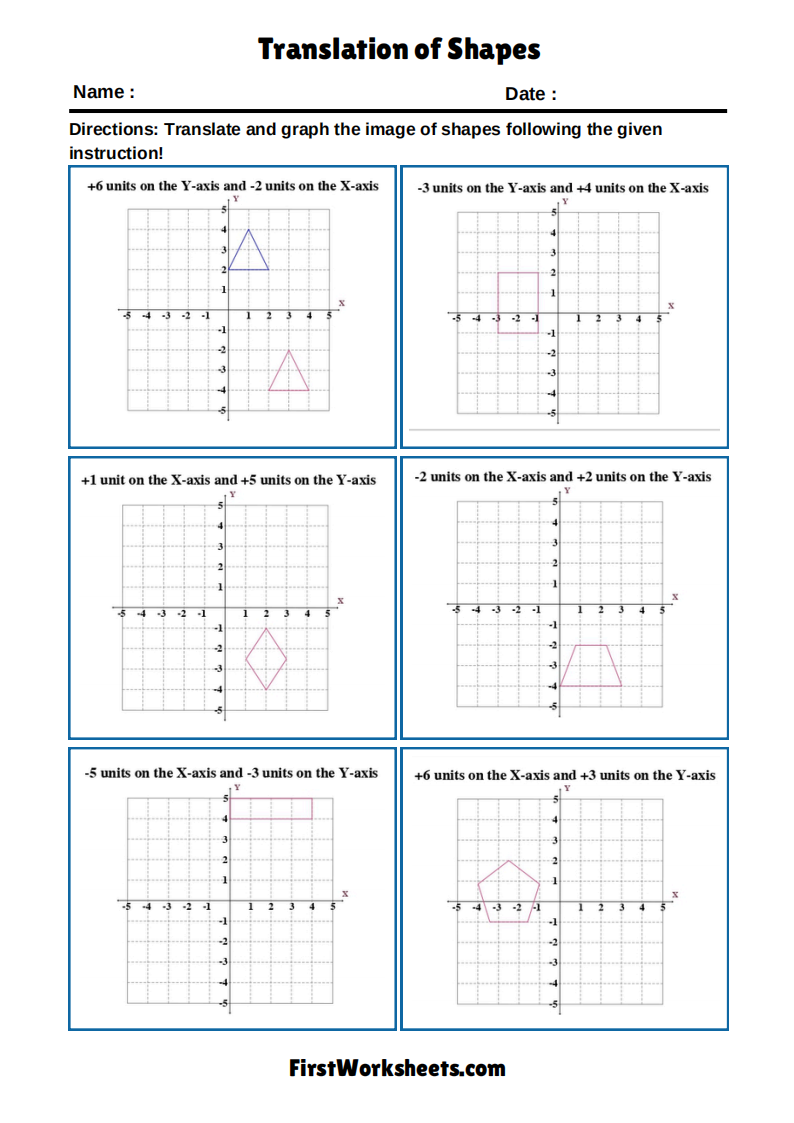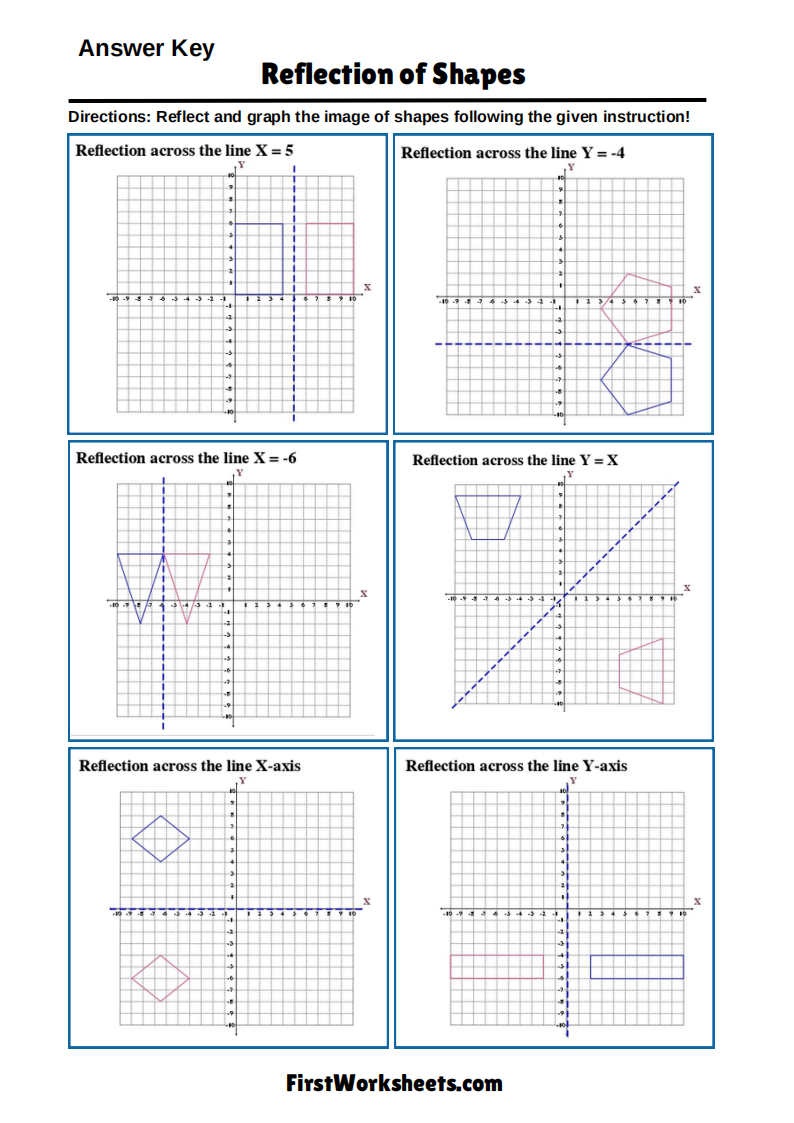Sequence Of Transformations Worksheets
Transformations are a fundamental concept in geometry, representing operations that move or change a figure in various ways while preserving certain properties. These operations include translations, rotations, reflections, and dilations. A sequence of transformations is when two or more of these operations are applied to a figure in succession.
Worksheets focused on sequences of transformations are essential educational tools that help students understand how these operations interact and combine. These worksheets are often used in middle school and high school math classes to reinforce the understanding of geometric transformations.
Types of Transformations
- Translation: A translation shifts a figure from one place to another without changing its orientation, shape, or size. The figure moves along a vector, meaning every point of the figure moves the same distance in the same direction.
- Rotation: Rotation turns a figure around a fixed point, known as the center of rotation. The figure rotates by a certain angle, and the direction of rotation can be clockwise or counterclockwise.
- Reflection: A reflection flips a figure over a line, known as the line of reflection, producing a mirror image. The reflected figure is congruent to the original figure, but its orientation is reversed.
- Dilation: Dilation resizes a figure by a scale factor relative to a fixed point, known as the center of dilation. If the scale factor is greater than 1, the figure enlarges; if it’s between 0 and 1, the figure shrinks. The shape of the figure remains similar, but its size changes.
A sequence of transformations involves applying more than one transformation to a figure. The order in which these transformations are applied is crucial because different sequences can yield different results. For example, rotating a figure and then translating it might result in a different final position compared to translating the figure first and then rotating it.
Structure of a Sequence of Transformations Worksheet
Sequence of transformations worksheets typically follow a structured approach to help students build their understanding progressively. Here’s how they are usually organized:
- Introduction and Review:
- The worksheet often begins with a brief review of individual transformations. This section may include definitions, visual examples, and simple problems to ensure that students have a solid grasp of each transformation type before moving on to sequences.
- Single Transformation Problems:
- Before diving into sequences, students might be asked to perform individual transformations on various figures. These problems are designed to reinforce their understanding of each transformation in isolation.
- Combined Transformation Problems:
- After mastering individual transformations, students tackle problems that involve two or more transformations in sequence. These problems usually start with simpler sequences, such as a translation followed by a reflection, and gradually increase in complexity.
- Graphical Representation:
- Many worksheets provide coordinate grids where students must plot points, draw figures, and visually apply transformations. This helps students visualize the effect of each transformation and understand how sequences alter the figure’s position and orientation.
- Analytical Questions:
- Some worksheets include questions that require students to analyze the sequence of transformations without necessarily performing them. For example, students might be asked to predict the final position of a figure after a given sequence or to determine if two sequences result in the same final figure.
- Real-World Applications:
- To make the concept more relatable, some worksheets incorporate real-world scenarios where sequences of transformations are applied. This could include designing patterns, mapping locations, or analyzing movement in physics.
- Challenge Problems:
- For advanced students, challenge problems might be included. These problems often involve more complex sequences, such as applying transformations in three-dimensional space, combining multiple transformations in a single step, or proving the congruence or similarity of figures after a sequence.
Benefits of Using Sequence of Transformations Worksheets
- Reinforces Conceptual Understanding:
- Working through sequences of transformations helps students develop a deeper understanding of how geometric operations interact. This reinforces their ability to think critically and visualize changes in figures.
- Enhances Problem-Solving Skills:
- These worksheets require students to approach problems step-by-step, encouraging logical thinking and the application of learned concepts in a structured way.
- Prepares for Advanced Geometry:
- Mastery of sequences of transformations lays the foundation for more advanced topics in geometry, such as congruence and similarity, which are essential for higher-level math courses.
- Builds Confidence:
- As students successfully complete problems of increasing complexity, they build confidence in their mathematical abilities, which can enhance their overall performance in math.
- Applicable Across Disciplines:
- Understanding transformations is not just beneficial for geometry. These concepts are also applicable in fields like physics, engineering, computer graphics, and even art and design.
Sequence of transformations worksheets are an invaluable resource in the geometry curriculum. By providing a structured approach to learning, these worksheets help students build a solid understanding of geometric transformations and their sequences. This understanding is crucial not only for excelling in geometry but also for applying these concepts in various real-world situations. Through consistent practice with these worksheets, students can develop strong problem-solving skills, boost their confidence, and prepare for more advanced mathematical challenges.



